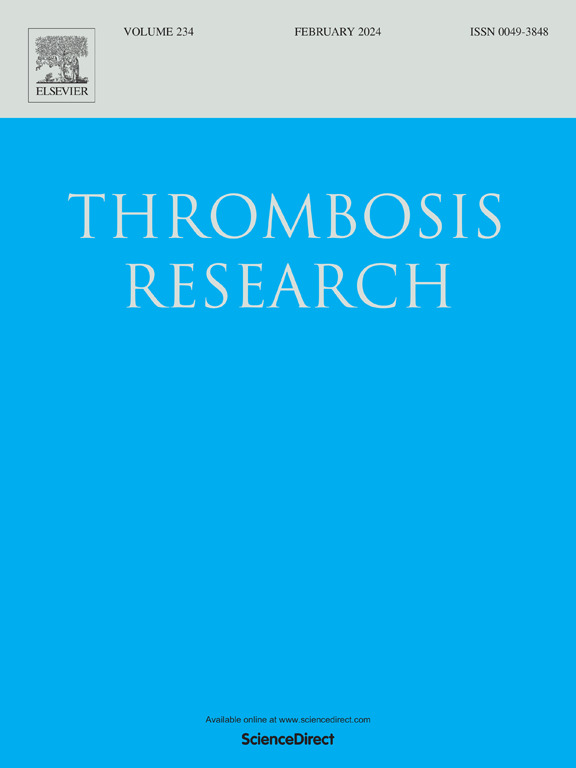Evaluating the safety outcomes of whole blood versus component transfusion in trauma: A meta-analysis of 59,213 patients
IF 3.4
3区 医学
Q1 HEMATOLOGY
引用次数: 0
Abstract
Background
Blood transfusion can play a critical role in saving lives by replenishing lost blood volume and helping to stabilize patients. This meta-analysis aims to compare the clinical effectiveness of whole blood (WB) transfusion against component therapy (CT) in the treatment of individuals suffering from traumatic injuries.
Methods
A comprehensive search of electronic databases was conducted up to March 2025 to identify randomized controlled trials and cohort studies. Data from continuous and categorical outcomes were synthesized using a random-effects model, producing mean differences (MD) and odds ratios (OR) along with corresponding 95 % confidence intervals (CIs).
Results
A random-effects meta-analysis of 14 studies showed a significant reduction in 24-h all-cause mortality with whole blood transfusion compared to component therapy (OR: 0.67, 95 % CI [0.50, 0.88]; p = 0.005). No significant differences were found between the two groups for length of hospital stay, ICU stay, days on ventilator, acute respiratory distress syndrome (ARDS), acute kidney injury (AKI), or sepsis. Specifically, the length of hospital stay (WMD: −1.57, p = 0.06), ICU stay (WMD: −0.20, p = 0.75), days on ventilator (WMD: −0.57, p = 0.24), ARDS (OR: 1.34, p = 0.30), and AKI (OR: 0.91, p = 0.63) showed no statistically significant differences, while sepsis (WMD: 1.10, p = 0.74) also revealed no significant variation between the groups. Removal of certain studies reduced heterogeneity in several outcomes.
Conclusion
Although whole blood has been demonstrated to improve 24-h mortality, the current findings are limited by observational data to classify it as a completely safe approach, thus necessitating the need for more randomized controlled trials (RCTs).
评估创伤中全血与成分输血的安全性:一项59,213例患者的荟萃分析。
背景:输血可通过补充失血量和帮助稳定患者在挽救生命方面发挥关键作用。本荟萃分析旨在比较全血(WB)输血与成分疗法(CT)治疗创伤性损伤患者的临床疗效。方法:全面检索截至2025年3月的电子数据库,确定随机对照试验和队列研究。使用随机效应模型合成连续和分类结果的数据,产生平均差异(MD)和优势比(OR)以及相应的95%置信区间(ci)。结果:14项研究的随机效应荟萃分析显示,与成分治疗相比,全血输注可显著降低24小时全因死亡率(OR: 0.67, 95% CI [0.50, 0.88]; p = 0.005)。两组患者的住院时间、ICU住院时间、使用呼吸机天数、急性呼吸窘迫综合征(ARDS)、急性肾损伤(AKI)、败血症均无显著差异。其中,住院时间(WMD: -1.57, p = 0.06)、ICU住院时间(WMD: -0.20, p = 0.75)、呼吸机使用天数(WMD: -0.57, p = 0.24)、ARDS (OR: 1.34, p = 0.30)、AKI (OR: 0.91, p = 0.63)组间差异无统计学意义,脓毒症(WMD: 1.10, p = 0.74)组间差异无统计学意义。删除某些研究减少了几个结果的异质性。结论:尽管全血已被证明可以改善24小时死亡率,但目前的研究结果受到观察性数据的限制,无法将其归类为完全安全的方法,因此需要更多的随机对照试验(rct)。
本文章由计算机程序翻译,如有差异,请以英文原文为准。
求助全文
约1分钟内获得全文
求助全文
来源期刊

Thrombosis research
医学-外周血管病
CiteScore
14.60
自引率
4.00%
发文量
364
审稿时长
31 days
期刊介绍:
Thrombosis Research is an international journal dedicated to the swift dissemination of new information on thrombosis, hemostasis, and vascular biology, aimed at advancing both science and clinical care. The journal publishes peer-reviewed original research, reviews, editorials, opinions, and critiques, covering both basic and clinical studies. Priority is given to research that promises novel approaches in the diagnosis, therapy, prognosis, and prevention of thrombotic and hemorrhagic diseases.
 求助内容:
求助内容: 应助结果提醒方式:
应助结果提醒方式:


